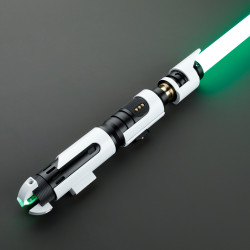
How Long is a Parsec In Comparison to a Lightyear in Space Travel
What's a parsec's length? The unit of measurement for space travel in Star Wars is frequently expressed in parsecs. Approximately thirty trillion kilometers make up one parsec. One parsec equals 3.26 lightyears when converting between parsec and lightyear units.
The distance that light can travel in a year is measured in lightyears. Based on the Gregorian calendar, which has 365.2425 days a year, 9.461 trillion kilometers make up a light year.
A parsec is a real unit of distance used by astronomers, though some think it's fictional because of its frequent mention in Star Wars. Astronomers like to use parsecs instead of lightyears. Parsecs make calculations easier. They are also better for measuring the size of the universe.
A parsec isalent to the real-world measurement in the Star Wars universe.
Parsec vs. Lightyear Travel: Which One Do You Use?
Using lightyears as a benchmark can be problematic. This is because they may not always correspond to a standard period. This is due to variations in yearly duration.
In Star Wars, a year was represented by 368 days on the Galactic Standard Calendar. A lightyear would have a different length in the Star Wars universe because a year on Earth consists of 365 days. Furthermore, it's feasible that galactic days were shorter than their earthly counterparts.
Therefore, a parsec is more accurate even if a lightyear is more intuitive because most people know that a lightyear is the distance that light can travel in a year.
Moreover, starship navigators employ a system based on parsecs rather than lightyears to locate star systems throughout the galaxy.
A Common Confusion Comparing Parsec to Lightyear
One frequent misunderstanding regarding parsecs is that they measure time rather than distance. This originates from Han Solo's arrogant remark about the Millennium Falcon in Episode IV when he first encounters Luke Skywalker and Obi-Wan Kenobi. The Millennium Falcon, according to Han, is "the ship that made the Kessel Run in less than 12 parsecs," a boast.
The Kessel Run is a hyperspace smuggler's route to carry illegal narcotic glitterstim spice from the planet Kessel.
Han seems to be talking about speed when he says, "Kessel Run in 12 parsecs." Han Solo seemed to have followed the same path as other smugglers on the Kessel Run.
However, the Millennium Falcon was significantly faster in hyperspace. As a result, it completed the journey much more quickly. But that interpretation of Han's boast would be illogical given that a parsec is a unit of measurement for distance.
The Kessel Run is a distance of eighteen seconds. Han's true meaning was that he effectively shortened the course, reducing the overall time to less than 12 parsecs as opposed to 18.
The Kessel Run in 12 Parsecs
How is it possible? Some people claim that Han Solo was unaware of the meaning of a parsec, but this is unlikely. Han was a skilled pilot in Star Wars, where parsecs were frequently used to measure distances in space.
The secret lies in the mechanics of hyperspace travel. Ships in hyperspace need to avoid moving straight. This helps them prevent crashes with black holes, planets, stars, asteroids, and other space objects. By doing this, they stay safe from potential dangers.
This keeps them safe from potential dangers. Ships use navigational systems to avoid these different aspects when flying through hyperspace.
Han employed the sophisticated hyperspace navigational capabilities on the Millennium Falcon to find a quicker way across the Kessel Run, completing it in 12 parsecs. Han claimed the Millennium Falcon's navigation system let it take riskier paths, enabling faster hyperspace jumps over shorter distances. Han would have probably had to pass closer to The Maw, a deadly asteroid cluster while traversing the Kessel Run.
The Millennium Falcon was quicker than most spacecraft in the conventional sense and had a more sophisticated navigation system. Traveling through hyperspace would be faster and more efficient. It would also allow for closer proximity to black holes without the risk of being pulled in. This would save both time and distance during space travel.
In other words, parsecs have always been a measure of distance rather than speed, despite Han's somewhat false claim.



















